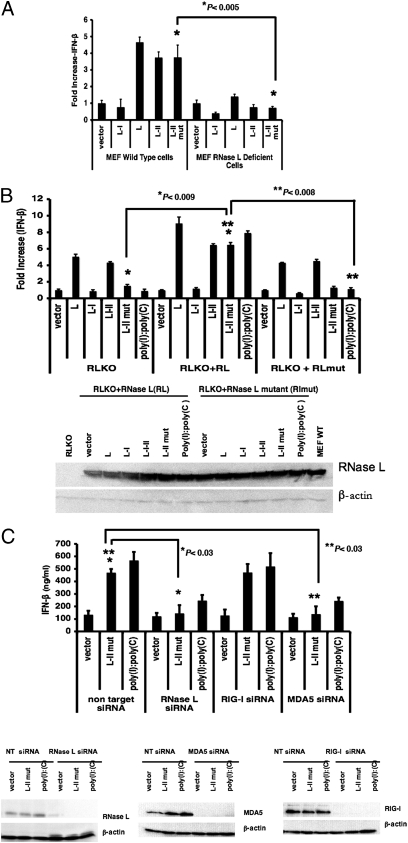Fig. 6.
RNase L plays a critical role in the activation of NF-κB and IFN-β by viral mRNA. (A) The role of RNase L in activating the IFN-β promoter. A dual-luciferase assay for IFN-β promoter activation was performed as described in Fig. 3A using WT or RLKO MEFs. (B) Restoration of IFN-β activation in RLKO MEFs. IFN-β activation after complementation with RNase L cDNA in RLKO MEFs was examined by a dual-luciferase experiment. RLKO MEFs were transiently transfected with RNase L cDNA or inactive RNase L mutant (R667A) cDNA. At 18 h after transfection, the cells were transfected with 1 μg/μL of vector, L, L-I, L-I-II, or L-II mut plasmids, along with reporter plasmids. At 1 d posttransfection, the luciferase assay was performed. RNase L and β-actin levels were measured by immunoblot analysis. All transfections were carried out in replicates of four. Error bars represent SD. (C) The role of RNase L in activating IFN-β expression. Then 293T cells were transfected with siRNA targeting RIG-I, MDA5, RNase L, or control siRNA. IFN-β production in response to vector, L-II mut, or poly(I):poly(C) was measured by ELISA. The expression of RIG-I, MDA5, and RNase L was examined by immunoblot analysis, with β-actin as a loading control.

